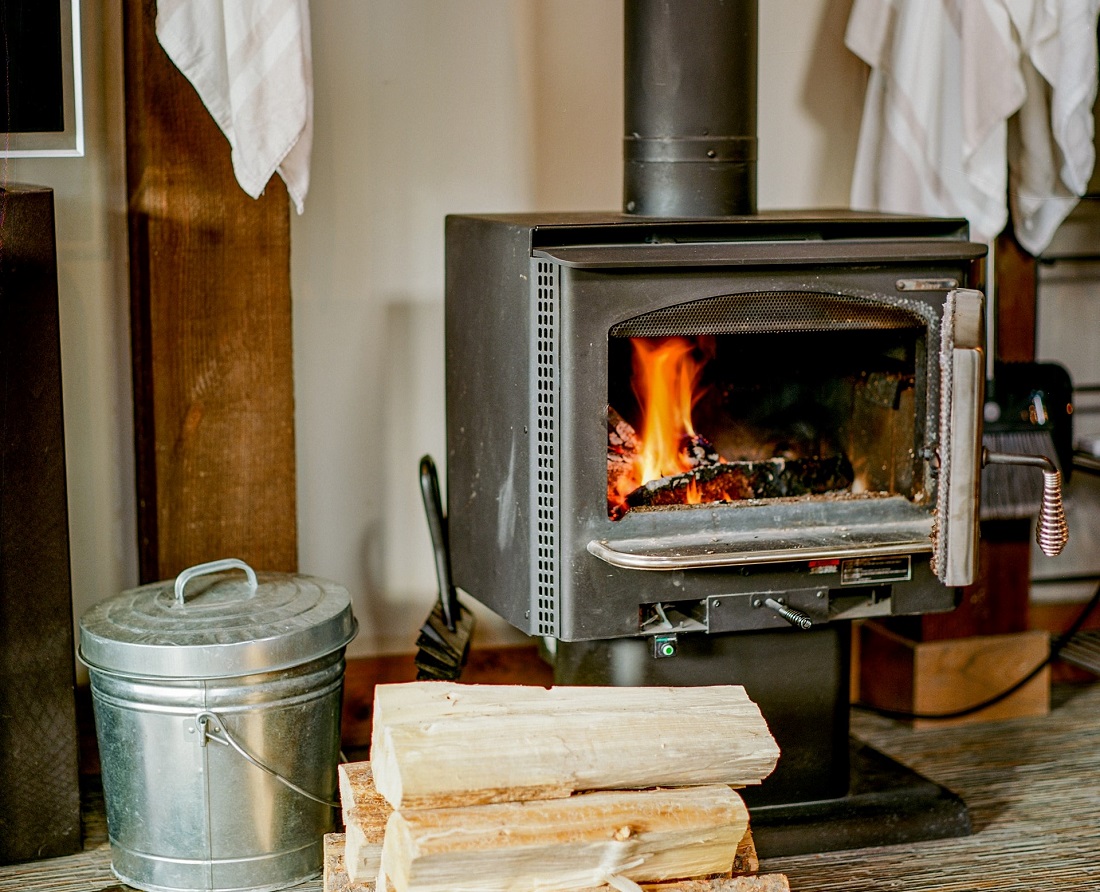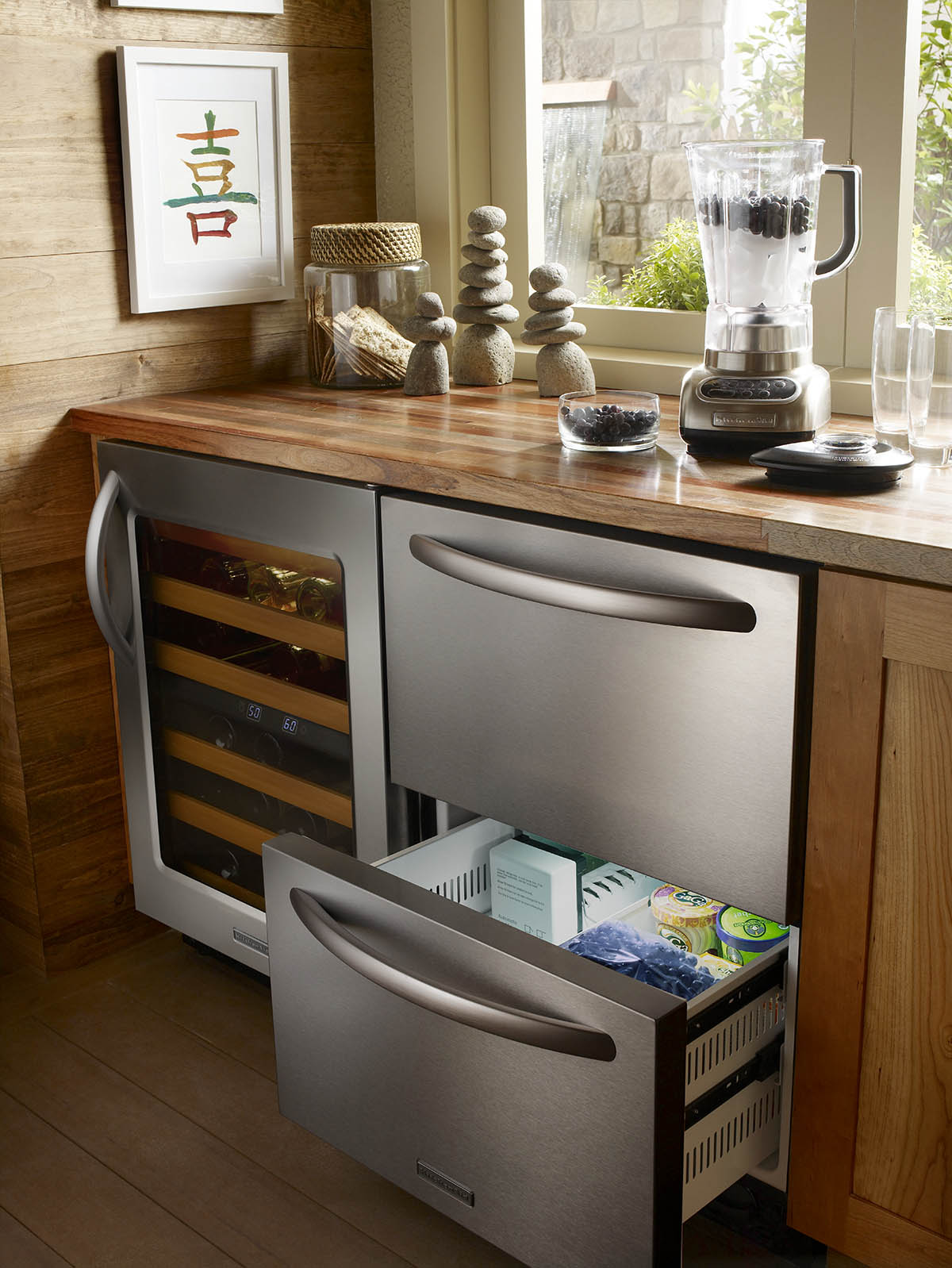WRITER | JULIE FORD
Hot drinks, warm blankets, and a toasty fire make winter a little more bearable. If you’re looking to add a little ambiance or to give your furnace a break, a freestanding stove will do the trick! Many options are available: wood-burning, gas, pellet, electric, and even corn. Before purchasing a unit, you’ll want to calculate both the square feet to be heated and the BTUs needed to heat the space (if you’re going for heat rather than ambiance) to ensure you make the best purchase for your purposes.
British Thermal Units, or BTUs, measure the amount of energy needed to raise the temperature of a pound of water by one degree Fahrenheit. Heating a 1,000-square-foot living room in a new, well-insulted northern Michigan home would require a freestanding stove reach approximately 45,000 BTUs. Selecting the correct-size stove for the desired area requires a few calculations, and working with a reputable dealer is best.
Can most types of freestanding stoves reach 45,000 BTUs? Yes, but the fuel cost is the next consideration. Neighbors may offer a bounty of free wood, but how free is it really when you factor in labor to haul and cut it to size? And not all wood burns equally – hardwoods like oak, maple, and ash have a higher heat value than pine or cottonwood. A wood-burning stove may be best for occasional use and ambiance rather than heating – especially as there are other considerations such as air quality. The Environmental Protection Agency now regulates wood and pellet stoves due to the particulates they emit.
Freestanding gas stoves have an ease of use advantage over wood-burning stoves. Both can heat an area efficiently and provide similar ambiance, but unlike a wood-burning stove, there’s an on and off switch. Both wood and gas stoves can operate in a power outage, but pellet and corn stoves may require an electric hopper. Natural gas or propane can be used in a freestanding gas stove, and vents can be installed up or through a wall, which is less obvious than the venting for a wood stove. A hearth is not required for a gas stove, and there’s no messy ash pan to clean. Gas stoves are available in a wide range of styles, from traditional cast iron to ultra-modern. Contemporary wood stoves do not have the breadth of design compared to gas, and for most designs, there’s still a big black pipe heading straight up from the firebox.
If you’re looking for the aesthetic of a fire without the flames, there are many designs available for freestanding electric heating stoves at very reasonable prices compared to wood and gas stoves. Think of this option more as a space heater with an electronic fire display – low BTU output and meant for a small space.
Many of us find cuddling up on the couch in front of a fire on a winter night appealing. Being mindful of each type of stove’s requirements and benefits will guarantee that you’re able to do just that.








